Umair bin Waheed
Leveraging Deep Operator Networks (DeepONet) for Acoustic Full Waveform Inversion (FWI)
Apr 14, 2025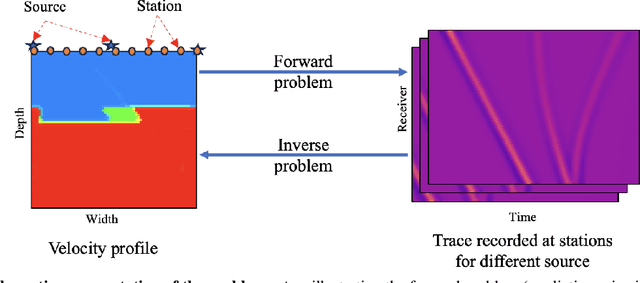
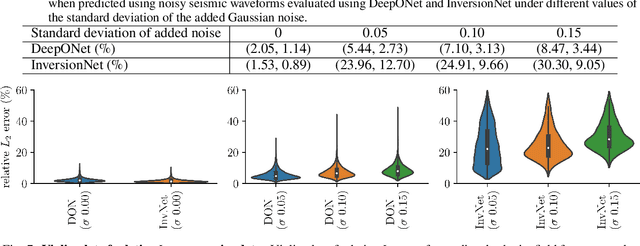
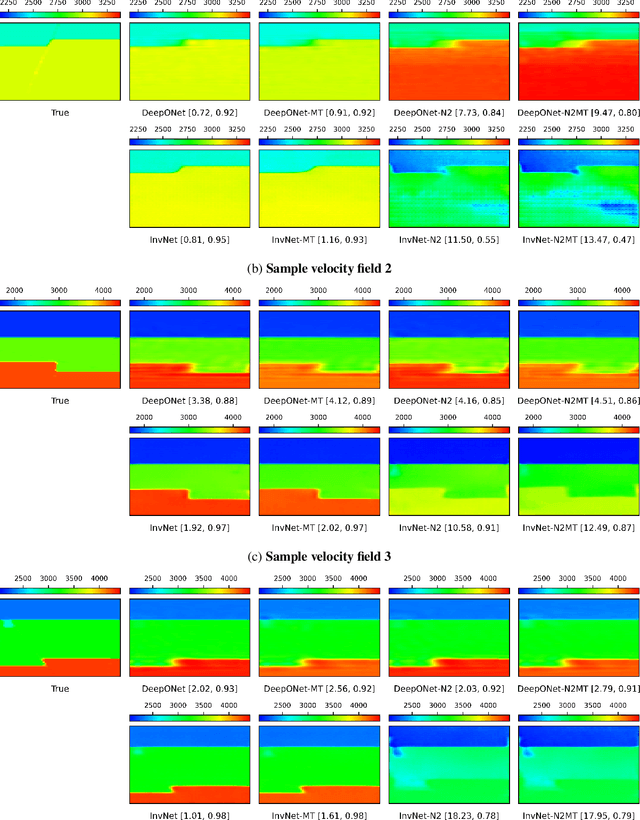
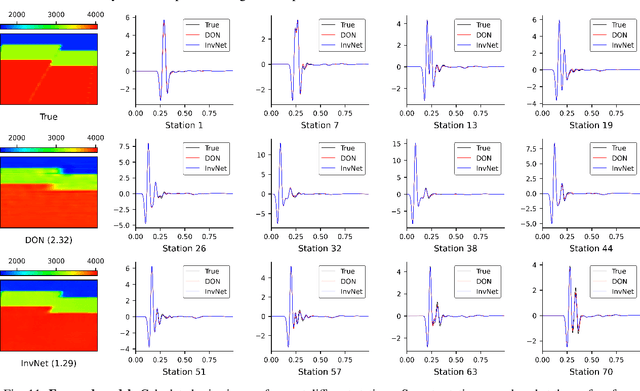
Abstract:Full Waveform Inversion (FWI) is an important geophysical technique considered in subsurface property prediction. It solves the inverse problem of predicting high-resolution Earth interior models from seismic data. Traditional FWI methods are computationally demanding. Inverse problems in geophysics often face challenges of non-uniqueness due to limited data, as data are often collected only on the surface. In this study, we introduce a novel methodology that leverages Deep Operator Networks (DeepONet) to attempt to improve both the efficiency and accuracy of FWI. The proposed DeepONet methodology inverts seismic waveforms for the subsurface velocity field. This approach is able to capture some key features of the subsurface velocity field. We have shown that the architecture can be applied to noisy seismic data with an accuracy that is better than some other machine learning methods. We also test our proposed method with out-of-distribution prediction for different velocity models. The proposed DeepONet shows comparable and better accuracy in some velocity models than some other machine learning methods. To improve the FWI workflow, we propose using the DeepONet output as a starting model for conventional FWI and that it may improve FWI performance. While we have only shown that DeepONet facilitates faster convergence than starting with a homogeneous velocity field, it may have some benefits compared to other approaches to constructing starting models. This integration of DeepONet into FWI may accelerate the inversion process and may also enhance its robustness and reliability.
Physically Guided Deep Unsupervised Inversion for 1D Magnetotelluric Models
Oct 20, 2024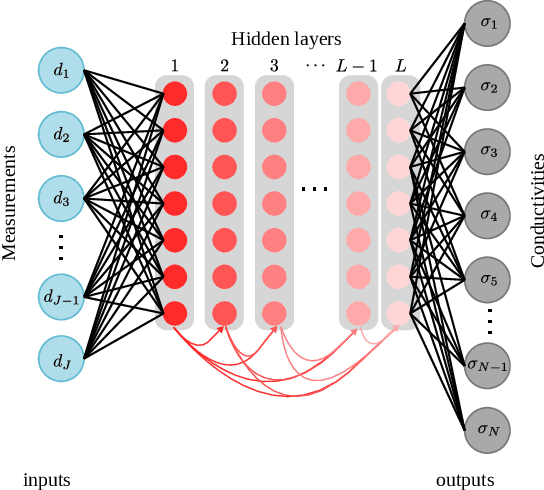
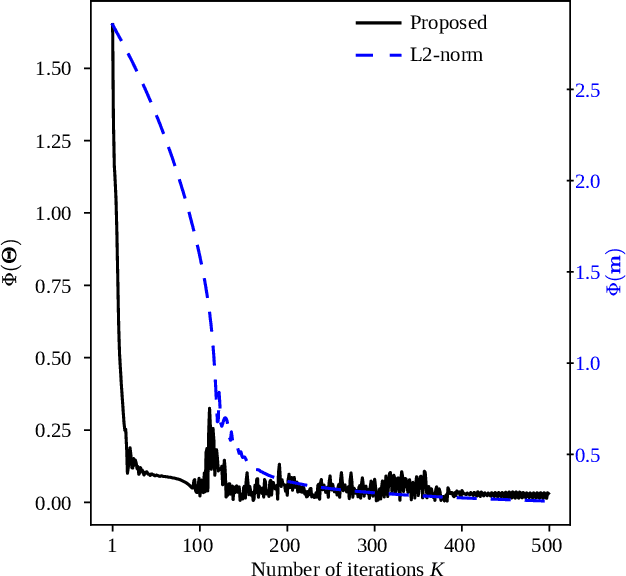
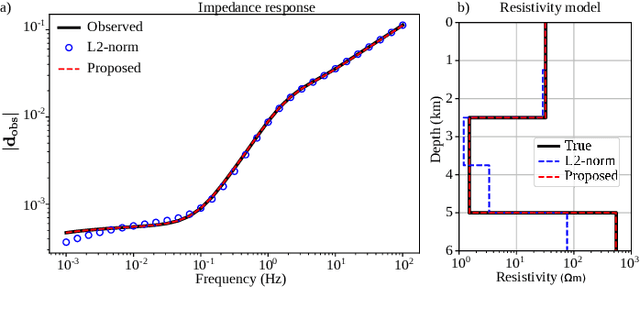
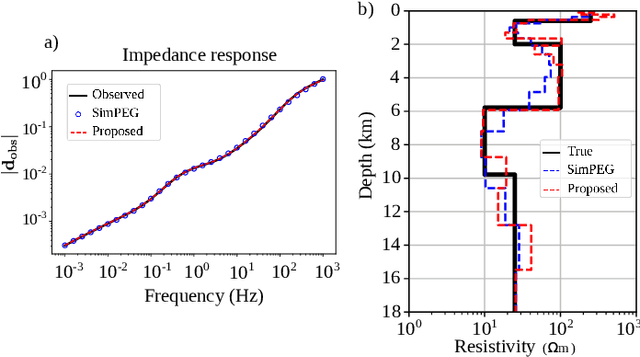
Abstract:The global demand for unconventional energy sources such as geothermal energy and white hydrogen requires new exploration techniques for precise subsurface structure characterization and potential reservoir identification. Magnetotelluric (MT) inversion is crucial for these tasks, providing critical information on the distribution of subsurface electrical resistivity at depths ranging from hundreds to thousands of meters. However, traditional iterative algorithm-based inversion methods require the adjustment of multiple parameters, demanding time-consuming and exhaustive tuning processes to achieve proper cost function minimization. Although recent advances have incorporated deep learning algorithms for MT inversion, these have been primarily based on supervised learning, which needs large labeled datasets for training. Therefore, it causes issues in generalization and model characteristics that are restricted to the neural network's features. This work utilizes TensorFlow operations to create a differentiable forward MT operator, leveraging its automatic differentiation capability. Moreover, instead of solving for the subsurface model directly, as classical algorithms perform, this paper presents a new deep unsupervised inversion algorithm guided by physics to estimate 1D MT models. Instead of using datasets with the observed data and their respective model as labels during training, our method employs a differentiable modeling operator that physically guides the cost function minimization, making the proposed method solely dependent on observed data. Therefore, the optimization problem is updating the network weights to minimize the data misfit. We test the proposed method with field and synthetic data at different acquisition frequencies, demonstrating that the resistivity models are more accurate than other results using state-of-the-art techniques.
A novel deeponet model for learning moving-solution operators with applications to earthquake hypocenter localization
Jun 07, 2023Abstract:Seismicity induced by human activities poses a significant threat to public safety, emphasizing the need for accurate and timely earthquake hypocenter localization. In this study, we introduce X-DeepONet, a novel variant of deep operator networks (DeepONets), for learning moving-solution operators of parametric partial differential equations (PDEs), with application to real-time earthquake localization. Leveraging the power of neural operators, X-DeepONet learns to estimate traveltime fields associated with earthquake sources by incorporating information from seismic arrival times and velocity models. Similar to the DeepONet, X-DeepONet includes a trunk net and a branch net. Additionally, we introduce a root network that not only takes the standard DeepONet's multiplication operator as input, it also takes addition and subtraction operators. We show that for problems with moving fields, the standard multiplication operation of DeepONet is insufficient to capture field relocation, while addition and subtraction operators along with the eXtended root significantly improve its accuracy both under data-driven (supervised) and physics-informed (unsupervised) training. We demonstrate the effectiveness of X-DeepONet through various experiments, including scenarios with variable velocity models and arrival times. The results show remarkable accuracy in earthquake localization, even for heterogeneous and complex velocity models. The proposed framework also exhibits excellent generalization capabilities and robustness against noisy arrival times. The method provides a computationally efficient approach for quantifying uncertainty in hypocenter locations resulting from traveltime pick errors and velocity model variations. Our results underscore X-DeepONet's potential to improve seismic monitoring systems, aiding the development of early warning systems for seismic hazard mitigation.
Deep-Learning Driven Noise Reduction for Reduced Flux Computed Tomography
Jan 18, 2021
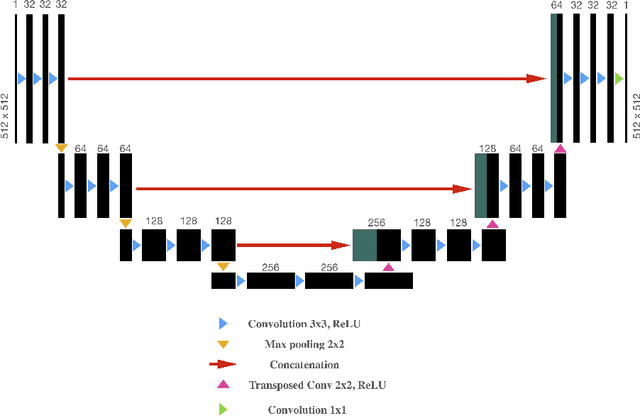
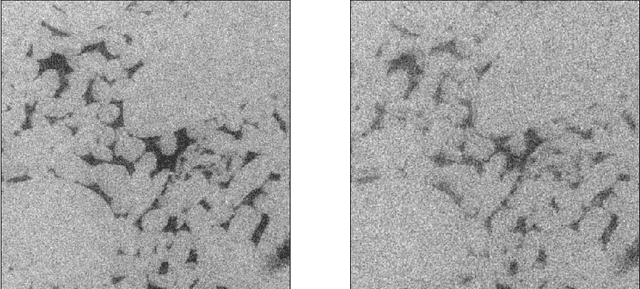
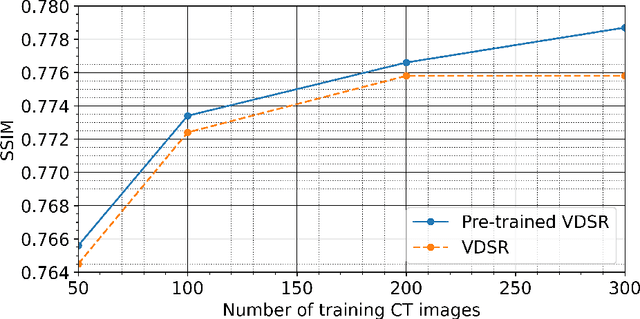
Abstract:Deep neural networks have received considerable attention in clinical imaging, particularly with respect to the reduction of radiation risk. Lowering the radiation dose by reducing the photon flux inevitably results in the degradation of the scanned image quality. Thus, researchers have sought to exploit deep convolutional neural networks (DCNNs) to map low-quality, low-dose images to higher-dose, higher-quality images thereby minimizing the associated radiation hazard. Conversely, computed tomography (CT) measurements of geomaterials are not limited by the radiation dose. In contrast to the human body, however, geomaterials may be comprised of high-density constituents causing increased attenuation of the X-Rays. Consequently, higher dosage images are required to obtain an acceptable scan quality. The problem of prolonged acquisition times is particularly severe for micro-CT based scanning technologies. Depending on the sample size and exposure time settings, a single scan may require several hours to complete. This is of particular concern if phenomena with an exponential temperature dependency are to be elucidated. A process may happen too fast to be adequately captured by CT scanning. To address the aforementioned issues, we apply DCNNs to improve the quality of rock CT images and reduce exposure times by more than 60\%, simultaneously. We highlight current results based on micro-CT derived datasets and apply transfer learning to improve DCNN results without increasing training time. The approach is applicable to any computed tomography technology. Furthermore, we contrast the performance of the DCNN trained by minimizing different loss functions such as mean squared error and structural similarity index.
Winning with Simple Learning Models: Detecting Earthquakes in Groningen, the Netherlands
Jul 08, 2020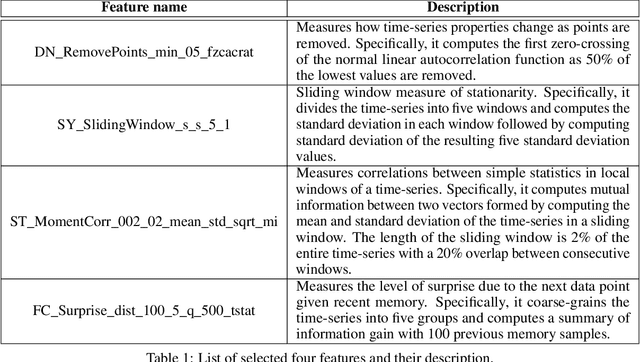
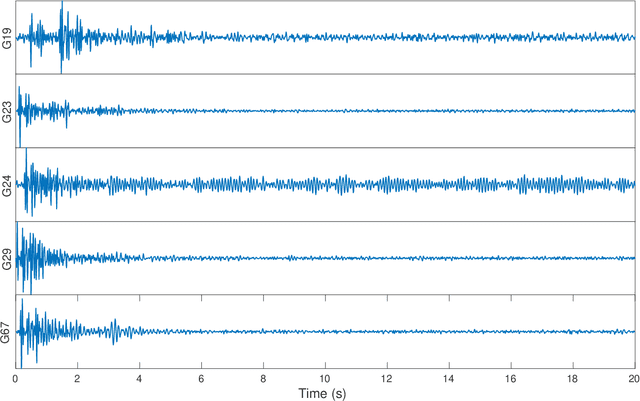
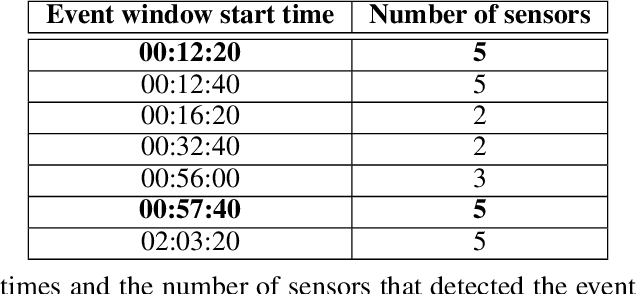
Abstract:Deep learning is fast emerging as a potential disruptive tool to tackle longstanding research problems across the sciences. Notwithstanding its success across disciplines, the recent trend of the overuse of deep learning is concerning to many machine learning practitioners. Recently, seismologists have also demonstrated the efficacy of deep learning algorithms in detecting low magnitude earthquakes. Here, we revisit the problem of seismic event detection but using a logistic regression model with feature extraction. We select well-discriminating features from a huge database of time-series operations collected from interdisciplinary time-series analysis methods. Using a simple learning model with only five trainable parameters, we detect several low-magnitude induced earthquakes from the Groningen gas field that are not present in the catalog. We note that the added advantage of simpler models is that the selected features add to our understanding of the noise and event classes present in the dataset. Since simpler models are easy to maintain, debug, understand, and train, through this study we underscore that it might be a dangerous pursuit to use deep learning without carefully weighing simpler alternatives.
 Add to Chrome
Add to Chrome Add to Firefox
Add to Firefox Add to Edge
Add to Edge